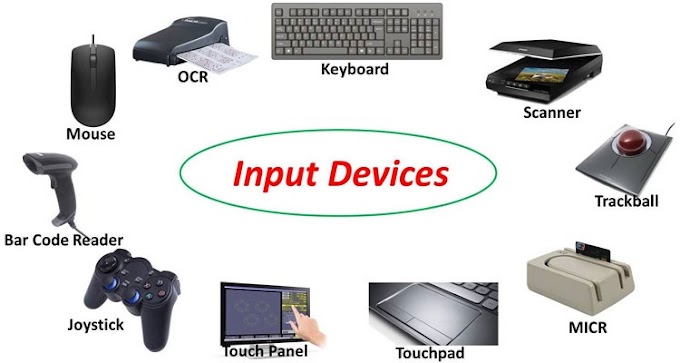raster scan display
- In this technology, electron beam is swept across the screen, one row at a time from top to bottom, during this beam intensity is turned on or off to create a pattern of illuminated spots.
- Framebuffer is a memory area which holds the set of intensity values for all screen points.
- Intensity values are then retrieved from refresh buffer and painted on te4h screen one row (scan line) at a time.
- Each screen point is referred to as pixel or pel (picture element).
- The capability of raster scan system to store intensity information for each screen point makes it well suited for realistic display of scenes containing dedicated shading and color patterns.
- Intensity range for pixel position depends on the capability of the raster system. For example: in black and white system, each screen point is either on or off. Therefore only one bit per pixel is needed to control the intensity of screen positions.
- A bit value of 1 indicate that electron beam is turned on at that position and 0 indicates beam intensity is to be off.
- Additional bits are needed when color and variations can be displayed.
- A system with 24 bits per pixel, and screen resolution of 1024×1024 requires 3 MB of storage for the frame buffer.
- Bitmap: Frame buffer on a black and white system with one bit per pixel
- Pixmap: The frame buffer of a system with multiple bits per pixel.
- Refreshing on a raster scan displays is carried out at the rate of 60 to 80 frames per second.
- A refresh rate of 60 frames per second is termed as 60 Hz.
- Horizonatal retrace: At the end of each scan line, the electron beam returns to the left side of the screen to begin displaying the next scan line. The return to the left of the screen after refreshing each scan line is horizontal retrace.
- Vertical retrace: At the end of each frame the electron beam returns to the top left corner of the screen to begin the next frame.
- Interlaced refresh procedure: On some raster scan systems each frame is displayed in two passes using an interlaced refresh procedure. At higher resolutions, the frame is sometimes scanned in interlaced fashion: first the odd numbered lines and then the even numbered lines. This allows for a lower refresh rate without producing flicker. Although it is best suited for text and fixed graphics display but not suitable for animated graphics.
- Interlacing is primarly used with slower refreshing rates. For example: with a raster scan display with 30 frames per second, noninterlaced display, some flicker is noticed.
- But with interlacing each of the two passes can be accomplished in 1/560th of a second which brings the refresh rate nearer to 60 frames per second and can avoid flicker.
- link===https://www.youtube.com/results?search_query=random+scan+display+in+computer+graphics
Random scan display
- In random scan display unit, a CRT has the electron beam directed only to the parts of the screen where a picture to be drawn.
- Random scan monitors draw a picture one line at a time and for this reason are also referred to as vector or stroke writing or calligraphic displays).
- Refresh rate on a random-scan system depends on the number of lines to be displayed.
- In this picture definition stored as a set of line drawing commands in an area of memory referred to as the refresh display file or display list, display program or refresh buffer.
- To display a specified picture, the system cycles through the set of commands in the display file drawing each component line in turn.
- After all line drawing commands are processed the system cycles back to the first line command in the list.
raster scan display:
- to 60 times each second.
- Random scan display are designed for line drawing applications and cannot display realistic shaded scenes.
- Picture definition is stored as a set of vector displays generally have higher resolution than raster systems.
- It help to produce the smooth line drawings because the CRT beam directly follows thRandom scan displays are designed to draw all the component lines of a picture 30 e line path.
Beam Penetration:
- It used random scan monitors for displaying color pictures.
- It has two layer of phosphor, usually red and green, coated onto the inside of the CRT screen and the displayed color depends on how far the electron beam penetrates into the phosphor layers.
- A slow electron excites only the outer red layer.
- A beam of very fast electrons penetrates through red layer and excites the inner green layer.
- Beam speeds and combination of red and green light are emitted to show two additional colors, orange and yellow. The speed of electron and screen color at any point is controlled by the beam acceleration voltage.
Shadow mask method:
- Shadow mask method normally used in raster scan system as it can produce a wide range of colors than beam penetration method.
- It has 3 phosphor color dots at each pixel position.
- One phosphor dot emits a red light, another emits a green light and the third emits a blue light
Shadow mask method:
- It has three electron gun one for each color dot.
- Shadow mask grid just behind phosphor coated screen is placed which consist of a holes where a single hole is equal to pixel.
- The three electron beams are deflected and focused as a group into the shadow mask which contains a series of holes aligned with the phosphor dot patterned. When three beam passes through a hole in the shadow mask they activate a triad (a dot triangle).
- The phosphor dots in the triangles are arranged so that each electron beam can activate only its corresponding color dot when it passes through the shadow mask.


.jpeg)
.jpeg)









No comments:
Post a Comment